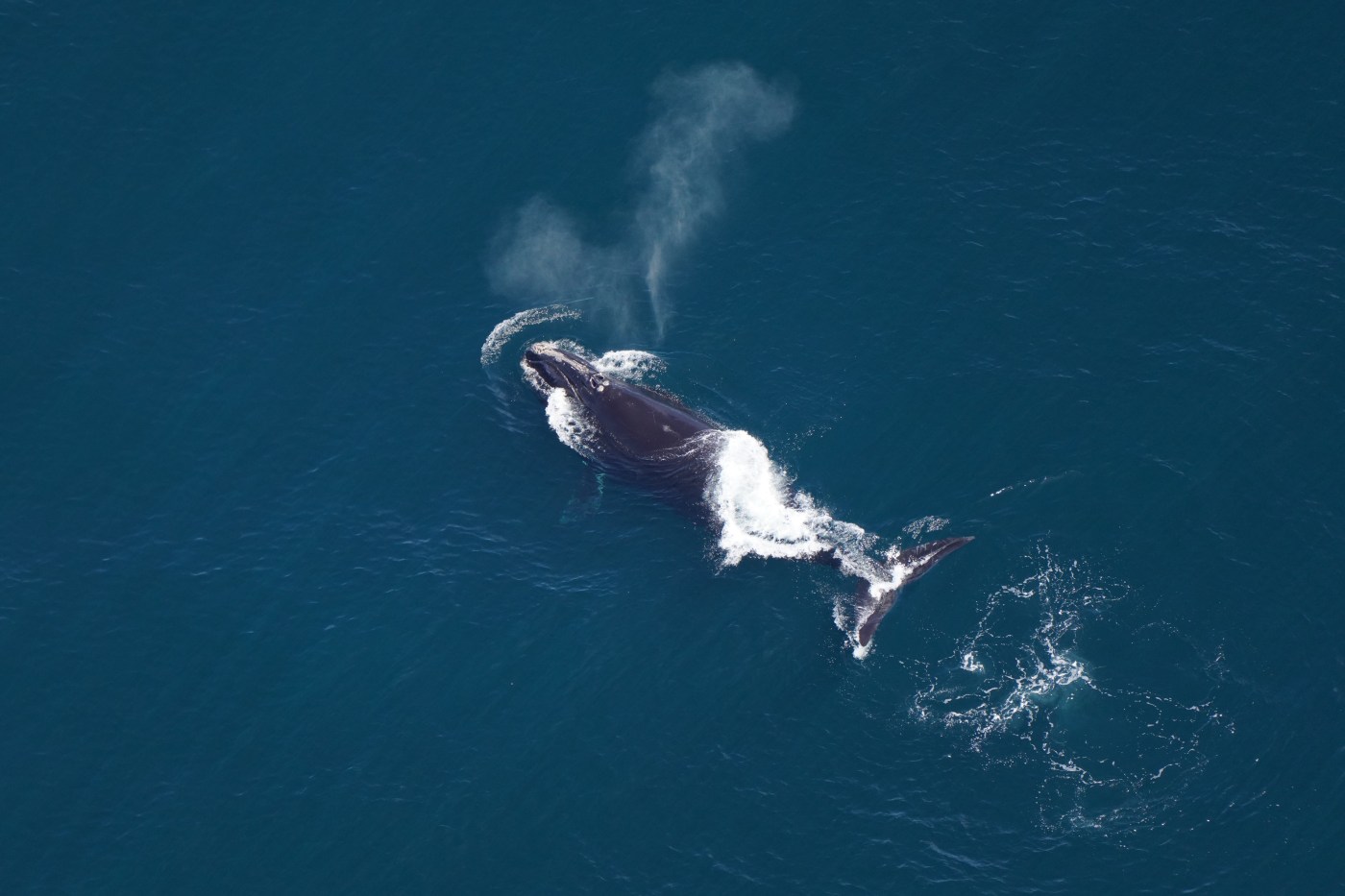
Go Slow! Endangered right whales spotted in shipping lanes south of Massachusetts
A group of over 75 critically endangered North Atlantic right whales were seen in shipping lanes south of Martha’s Vineyard, the New England Aquarium announced, triggering a “crucial” slow zone in the area.
“Ship strikes are one of the leading causes of injuries and deaths for this critically endangered species, making it crucial that vessels slow down to the recommended speed,” the Aquarium staff stated Thursday. Voluntary slow zones encourage mariners to slow to 10 knots or less to prevent collisions with whales.
During an aerial survey on April 23, scientists with the New England Aquarium’s Anderson Cabot Center for Ocean Life spotted over 60 of the right whales 55 miles south of Martha’s Vineyard — likely feeding in active shipping lanes.
On April 28, the Aquarium said, researchers on a second survey saw 40 right whales, including 15 not seen during the first flight. Though whales have been spotted in the area in the springtime for the last few years, the group is “one of the largest researchers have seen there.”
The presence of the endangered species is “cause for concern,” the NEA said, noting that some of the whales were feeding just below the surface and difficult for oncoming vessels to detect.
“While the location of the whales in the shipping lanes was concerning, in this particular instance, our survey team was able to successfully alert a ship in real time and have them shift course to avoid the right whales gathered together and feeding,” said Associate Research Scientist Orla O’Brien, who leads the aerial survey team at the Aquarium’s Anderson Cabot Center.
Several large commercial ships were alerted to the whales in the area by the team, the Aquarium team said, and the NOAA Fisheries has since ordered a dynamic management area or voluntary Slow Zone, which mariners are urged to monitor alerts of regularly.
Southern New England sees its peak influx of North Atlantic right whale sightings in winter and spring, the NEA stated. In Cape Cod Bay alone this season, the Aquarium’s aerial survey team has spotted 168 individual North Atlantic right whales, nearly half of the estimated population of about 370.
Sightings south of Cape Cod Bay have been “sparse” until now, the NEA said.
Among the group in the shipping lanes, researchers counted a majority of adults and several calving females, including a long-missing whale “Calvin.”
“This was the first time Calvin had been seen in almost three years, and at her last sighting, she had severe entanglement wounds that were new,” said Associate Research Scientist Katherine McKenna. “A lot of people had given up hope that she was still alive after not being seen for so long.”
Related Articles
First right whale mom and calf of the season spotted in Cape Cod Bay: ‘Hope for the species’
Calvin was orphaned as an 8-month-old calf after her mother was killed by a large vessel strike in 1992, and has since been injured in eight entanglements and given birth to four calves, the Aquarium said.
Her story “illustrates the resiliency of right whales,” McKenna said. But as the the whales shift locations, the Aquarium said, collaborations between scientists, industries and officials are also “essential” to minimize vessel strikes and entanglements.
“(T)heir resiliency alone is not enough for this species to recover,” McKenna said. “We must reduce the sources of human-caused mortality and injury that are preventing the right whale population from thriving.”
Herb #1250 and Batman #1017 swim along shipping lanes south of Massachusetts. (Photo by New England Aquarium, under NMFS Permit #25739)


